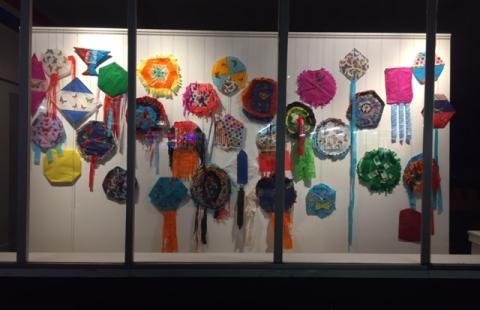What were the specific goals of this creative economy project? Describe the community development challenge or opportunity that your project was designed to address:
Trauma and its effects are part of Chelsea's DNA. The City suffered two apocalyptic fires, one in 1908 and another 1973 that wiped out each time more than 1/5 of the municipality, destroying businesses, homes, churches, schools and other civic infrastructure. In 1991, the city collapsed under widespread corruption; nearly bankrupt it went into state receivership and it has taken twenty-five years for commonplace government services to be restored. Chelsea residents face multiple challenges, including poverty, unemployment, high rates of gang and domestic violence, limited availability of affordable housing, effects of the opioid epidemic/other substance use, and a large newly-arrived refugee and Central American Immigrant population.
Experiencing trauma has a tremendous lifelong impact on an individual’s health and quality of life, and makes the individual and the community as a whole vulnerable to additional harms. Across the city community groups are looking to how we can be a more trauma-sensitive, resilient city. This project seeks to facilitate community dialogue about trauma and loss, to break the cultural norms that can perpetuate negative experiences generation to generation and to rewrite Chelsea's trauma histories.
If the goals change over time, please describe how:
Gentrification and the displacement of Chelsea's Latino community is a significant concern as housing costs continue to rise and development pressures in the city increase. A festival centered on cultural traditions of Central America serves to establish a Latino identity in the community. Through empathy and conversations about shared experiences of loss, the event helps to draw together diverse people towards a deeper understanding and connection.
Who was involved in this project and what did they do? (be sure to include the partners from outside of the creative sector and how local voices were included):
As the Downtown Coordinator, based in Chelsea's City Hall, my task is to advance the economic vitality of the neighborhood and to improve the quality of life for people here. A teen from Chelsea High School working with me over the summer researched Central American traditions of transformation and change and identified a kite festival held in Guatemala that could be a starting point for an event in Chelsea. A resident of the neighborhood, Jenna Kilman, an art therapist who works with Latino youth in cities north of Boston and in Central America communities but never before in her own city, was my key partner conceiving the project's implementation. Dan Cortez, the community liaison for the Chelsea Police Department and key coordinator of the Chelsea Hub, a network of community and human service providers, further helped refine the project.
Kits with the supplies for making kites and a discussion guide were created and groups were invited to either do the project on their own or Jenna was available to facilitate the activity and conversations with them. About 100 kites were created in groups of 5 to 30 including families at Chelsea's Boys & Girls Club, a women's substance abuse support group at CAPIC, a group of peer leaders and their adult mentors at Chelsea High School, two groups from the Chelsea Senior Center, older students at the alternative high school of the Phoenix Charter Academy, and staff of Healthy Chelsea.
On Friday, November 1, volunteers from Christ Church in Charlestown were joined by the regular visitors of a day shelter in the downtown with their support team helped set up the event. The kites were put on display on the walls of storefront established in a vacant retail space. Outside tents and tables were set up on the sidewalk and in the abutting parking spaces. Area businesses provided traditional colada morada, a drink made with fruit and corn and guaguas de pan, “bread babies,” sweet rolls shaped like swaddled infants and frosting. Visitors to the event were able to decorate the rolls and either ate them right away or brought them home. Visitors were invited to reflect on their own experiences of loss and change as they made tissue paper flowers. On a giant community kite, visitors selected tissue paper colors that reflected the positive ways they experience self care and glued them into place. Local guitarists and vocalists performed music in a variety of Latin styles.
How does this project relate to a larger community development strategy?
Chelsea seeks to be a more trauma-informed city, sensitive to the experiences of our residents and to support one another in healing. The project also supports efforts to improve the downtown, bringing positive, family oriented activity to the neighborhood. In a community that has no public art that reflects the significant Latino community living here, this community event that we hope to grow and establish over the years, helps to tell the story of our Central American neighbors.
What projects or places, if any, inspired your approach to this creative economy project?
The annual kite festival that takes place in the cemeteries of Sumpango, Guatemala was a primary inspiration. As is the Lantern Festival that takes place at Forest Hills Cemetery in Jamaica Plain, Massachusetts. The idea was to provide a simple, creative project to facilitate conversations, allowing for intimacy, reflection and mournfulness, while also providing the means to transform those feelings into something external, communal and towards release.
